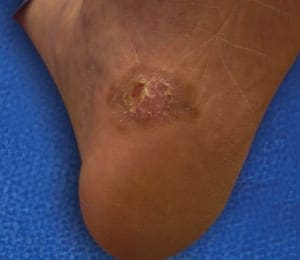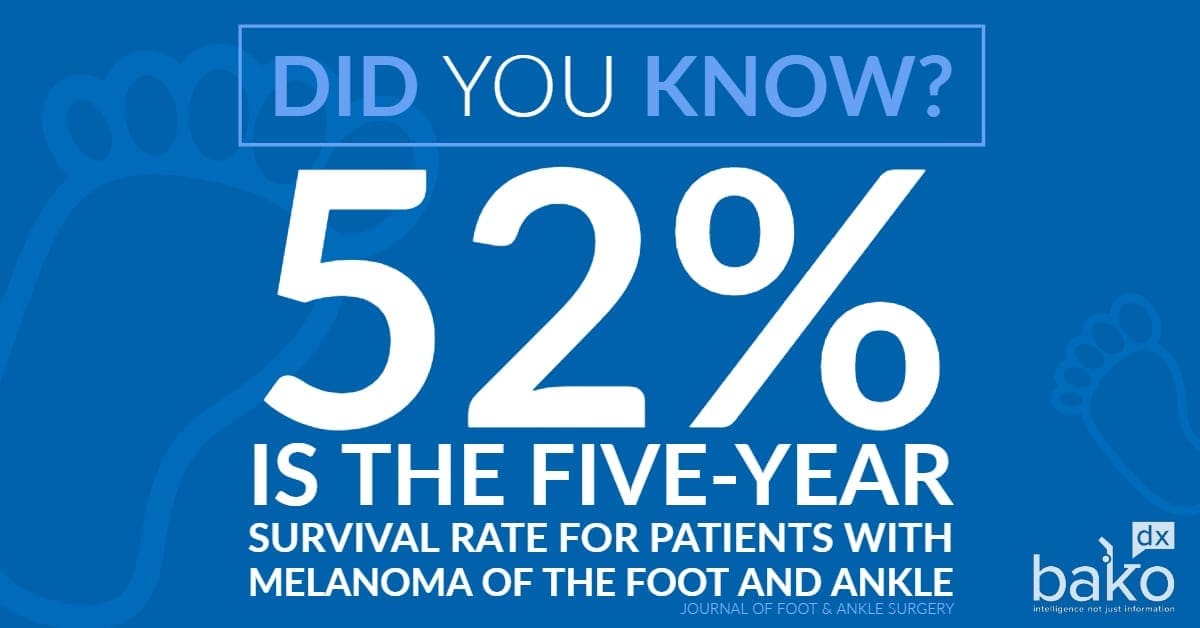
Podiatrists’ Role in Identifying Skin Cancers
It is important to provide patients with a thorough skin examination of the lower extremities. Early detection through diagnostic testing is recommended.
According to the New England Journal of Medicine, a person waits 2.2 years from the onset of their symptoms until diagnosis of subungual melanoma. Melanoma can take many shapes, and can spread earlier and more quickly than other skin cancers. It can often be missed on the lower extremities. Incorporating a thorough lower extremity skin examination at every patient visit can save a life.
In 2021, biopsy specimens submitted to the BakoDx team of dermatopathologists resulted in the diagnosis of 1,409 malignancies. Will you be the physician who identifies the next malignancy?
BakoDx Monthly Malignancy Report
| Malignancy | 2021 | 2022 YTD |
|---|---|---|
| Carcinoma | 1,095 | 481 |
| Melanoma | 229 | 176 |
| Sarcoma/Lymphoma | 85 | 70 |
| TOTAL | 1,409 | 727 |
Malignancies may appear similar to common skin conditions





Skin cancers of the lower extremity can go undetected
During routine medical examinations, the skin of the lower extremity is often overlooked. That’s why it is important that abnormalities are checked regularly. That might be indicative of evolving skin cancer.
While there is no exact way to visually distinguish a cancerous lesion from a benign one, you can evaluate the suspected area and conduct a biopsy to send for laboratory testing. You can then recommend the best course of action because early detection and treatment may save a patient’s life.
Incorporating a comprehensive lower extremity skin examination with every patient visit may save a life. After reviewing patient and family history for dermatologic malignancies, look for any new suspicious lesions or changes in existing ones.
Thoroughly examine:

-
Lower leg
-
Dorsal aspect
-
Plantar aspect
-
Toenails and under the nail plate
-
Interdigital space
Biopsy suspicious lesions to establish a definitive diagnosis. Early diagnosis and treatment may save a patient’s life.



